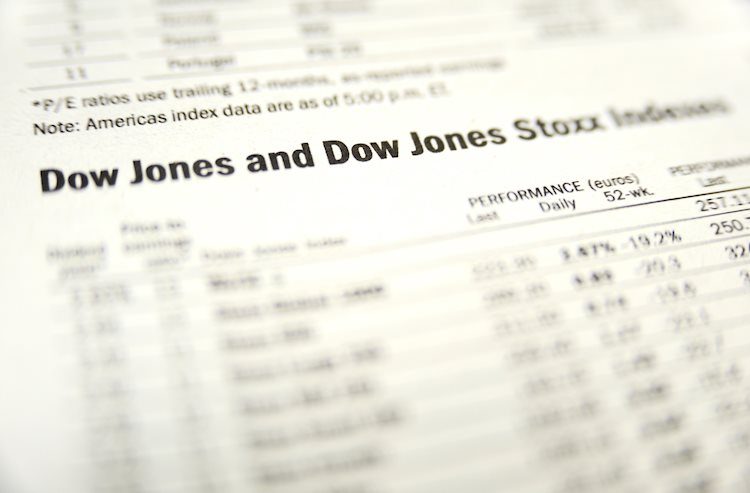- The Dow Jones tilted into the bearish side, falling 300 points.
- Exhaustion plays are on the cards with indexes deep in overbought territory.
- Despite a trim off the top, the Dow Jones is on pace for another record month.
The Dow Jones Industrial Average (DJIA) pulled back on Wednesday, shedding around 300 points and easing back below the 42,000 handle as the heavyweight equity index takes a breather after a period of repeated breaks into record territory.
Treasury yields ticked higher on Wednesday and most of the US indexes are testing into the red, with the Dow Jones taking the brunt of the damage, falling 0.8% through the US trading session. Market focus is shifting back to the state of the US economy following the Federal Reserve’s (Fed) bumper 50 bps rate cut last week.
US consumer confidence indicators fell this week as the average US consumer doesn’t share in the stock market’s exuberance over Fed rate cuts, with key confidence readings falling to their lowest levels in three years and consumer inflation expectations for the next 12 months ticking higher. This Friday will see a fresh update to US Personal Consumption Expenditure (PCE) inflation figures.
New home sales also fell in August, declining 4.7% to 716K from the previous month’s revised 751K. Meanwhile, investors will see another print of US Gross Domestic Product (GDP) growth for the second quarter, expected to hold steady at 3.0% on an annualized basis. Thursday will also bring a slew of speeches and public appearances from several Fed officials, including Fed Chair Jerome Powell.
Dow Jones news
Most of the Dow Jones equity index tilted into the red on Wednesday, with around two-thirds of the stock board easing for the day. Intel (INTC) still managed to extend a near-term rally, stretching another 2.5% to $23.40 per share, but the battered chipmaker still remains down over 53% YTD.
Amgen (AMGN) tumbled nearly 5% on Wednesday, dragging the Dow Jones lower overall and fell below $315 per share for the second time since the beginning of August. The pharmaceutical company’s recent exploration into a new eczema drug called rocatinlimab yielded results that undershot efficacy expectations, and also underperformed competitors’ products that already exist for treating atopic dermatitis.
Dow Jones price forecast
Wednesday’s bearish performance for the Dow Jones puts the index at risk of closing in the red for the week as over-exerted buyers run out of gas and give short pressure a chance to build back up. However, despite a near-term snap, the index is still planted firmly in the long side of the trend, and a buildup of short positions could give way to a snap back into record chart territory.
If the bears win the near-term tug-of-war, the Dow Jones could backslide to the 50-day Exponential Moving Average (EMA) near 40,800.
Dow Jones daily chart
Fed FAQs
Monetary policy in the US is shaped by the Federal Reserve (Fed). The Fed has two mandates: to achieve price stability and foster full employment. Its primary tool to achieve these goals is by adjusting interest rates. When prices are rising too quickly and inflation is above the Fed’s 2% target, it raises interest rates, increasing borrowing costs throughout the economy. This results in a stronger US Dollar (USD) as it makes the US a more attractive place for international investors to park their money. When inflation falls below 2% or the Unemployment Rate is too high, the Fed may lower interest rates to encourage borrowing, which weighs on the Greenback.
The Federal Reserve (Fed) holds eight policy meetings a year, where the Federal Open Market Committee (FOMC) assesses economic conditions and makes monetary policy decisions. The FOMC is attended by twelve Fed officials – the seven members of the Board of Governors, the president of the Federal Reserve Bank of New York, and four of the remaining eleven regional Reserve Bank presidents, who serve one-year terms on a rotating basis.
In extreme situations, the Federal Reserve may resort to a policy named Quantitative Easing (QE). QE is the process by which the Fed substantially increases the flow of credit in a stuck financial system. It is a non-standard policy measure used during crises or when inflation is extremely low. It was the Fed’s weapon of choice during the Great Financial Crisis in 2008. It involves the Fed printing more Dollars and using them to buy high grade bonds from financial institutions. QE usually weakens the US Dollar.
Quantitative tightening (QT) is the reverse process of QE, whereby the Federal Reserve stops buying bonds from financial institutions and does not reinvest the principal from the bonds it holds maturing, to purchase new bonds. It is usually positive for the value of the US Dollar.
Read the full article here

